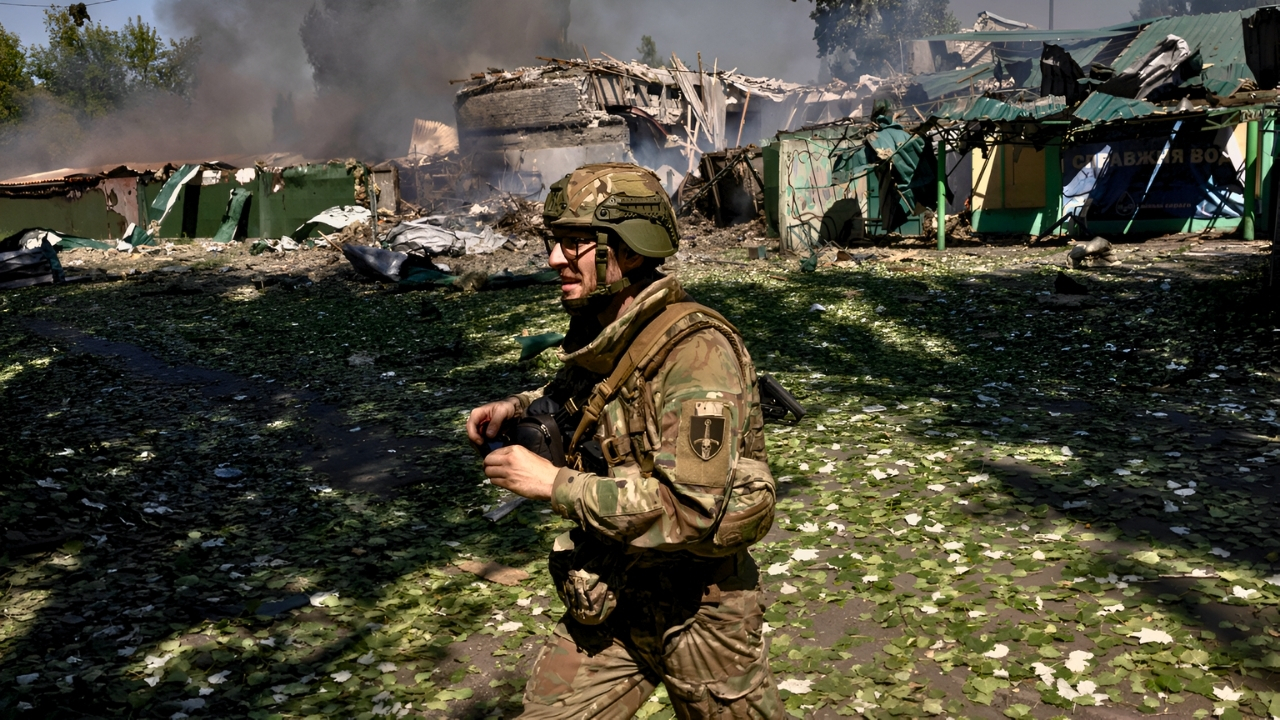
Before dawn in Crimea, military trucks rumbled through quiet neighborhoods. Men disappeared from homes, bus stops, and markets—no warning, no choice. Since February 2022, Russia has forcibly conscripted more than 46,000 Ukrainians from occupied territories, turning civilians into soldiers fighting against their own country.
Crimea: Moscow’s Conscription Epicenter
The vast majority—over three-quarters—of these forced conscripts came from Crimea, a peninsula annexed by Russia in 2014. Russian authorities drafted 35,272 men from Crimea and another 5,368 from the city of Sevastopol. This marks a dramatic escalation from the 30,000 Crimeans conscripted between 2014 and 2021. Over the past decade, the total number of Crimeans forced into Russian military service has reached as high as 43,000.
For many residents, the loss of sovereignty meant more than a change of flag. It meant becoming a resource for Moscow’s war machine. The disproportionate targeting of Crimea, the longest-occupied region, reveals a deliberate strategy: to exploit the most vulnerable populations to fill military ranks.
Conscription Expands Across Occupied Ukraine

The machinery of forced mobilization did not stop at Crimea. From February 2022 through July 2024, Russia extended its draft across all occupied Ukrainian territories. Donetsk contributed 5,368 conscripts, Luhansk 4,650, Zaporizhzhia 560, and Kherson 478. What began as temporary military control quickly evolved into a systematic campaign: every occupied city became a draft center, every village a hunting ground for military-age men.
Russian lawmakers formalized this process, passing legislation that made conscription legal year-round in occupied regions. There was no seasonal reprieve; quotas were set, and permanent drafting teams were deployed. For men of conscription age, the threat became a constant presence. The message was clear: these territories, and their people, now belonged to Russia’s military.
The Passport Trap and the Cost of Refusal

Russia’s strategy relied not only on force but also on bureaucracy. By March 2024, Russian passports became mandatory for accessing fundamental rights in occupied territories, including healthcare, pensions, social services, and property ownership. Interior Minister Vladimir Kolokoltsev reported that 3.5 million Russian passports had been issued to Ukrainians by that date, with an additional 700,000 issued since then.
Refusing a Russian passport meant losing access to essential services, custody of children, or even facing imprisonment. Accepting one, however, made men eligible for conscription. The choice was stark: survival or freedom. For many, the document in their pocket became a conscription warrant.
Those who resisted faced harsh penalties. Draft evasion carried a two-year prison sentence, and at least 583 criminal cases have been launched in Crimea since 2015. Human rights groups documented dawn raids, with military convoys surrounding neighborhoods, confiscating phones, and forcibly transporting men to conscription centers. In the autumn of 2022, coordinated sweeps saw entire districts encircled and men seized from homes and streets—some never returned.
Legal Limbo for the Forcibly Conscripted
The consequences of forced conscription have created legal and moral dilemmas for Ukraine. Ukrainian courts have begun acquitting citizens captured in Russian uniforms, recognizing that they were coerced into service. Yet, these men remain imprisoned on Ukrainian territory, unable to return home without risking re-conscription. Legal vindication offers little practical relief; justice, in this context, is mainly symbolic.
The problem extends to prisoner-of-war exchanges. Sixteen percent of prisoners in Ukrainian camps are Ukrainian citizens, many from Crimea, who were forced to fight for Russia. Each exchange negotiation is fraught: trading Ukrainian soldiers for forcibly conscripted Ukrainians risks sending victims back to Russian-controlled territory, where they face renewed danger. Ukraine is now considering legal amendments to protect these individuals from being returned in future exchanges, aiming to recognize them as protected persons rather than using them as bargaining chips.
International Law and the Reality on the Ground

International law is unequivocal: the Hague Regulations of 1907 and the Fourth Geneva Convention both prohibit forced conscription in occupied territories. Legal experts agree that Russia’s actions constitute war crimes. Yet, enforcement is lacking. Despite explicit prohibitions, Russia has continued its campaign without meaningful international intervention.
Human rights organizations have meticulously documented these violations. Olha Skrypnyk, head of the Crimean Human Rights Group, has tracked annual conscription campaigns since 2014. She reports that, before 2022, about 6,000 Crimeans were drafted each year—numbers that surged after the full-scale invasion. Some conscripts, unarmed, were reportedly used as human shields, sent to the front lines ahead of regular Russian units.
A Crisis Without End

The official figure of 46,327 forcibly conscripted Ukrainians likely understates the accurate scale. The Eastern Human Rights Group estimates that Russia has mobilized up to 300,000 men from occupied territories since February 2022, many coerced into “volunteering” under threat or economic hardship. The distinction between forced and coerced service blurs when survival is at stake.
Russia’s mounting casualties—estimated at 600,000 dead and wounded by late 2024—have only increased the demand for new soldiers. In spring 2025, Russia ordered its largest draft in 14 years, with 160,000 men called up. Occupied Ukrainians have become a strategic resource: deployed in high-risk operations to preserve Russian forces and maintain plausible deniability.
The campaign to forcibly conscript Ukrainians stands as Europe’s largest in modern history. Each number represents a life uprooted, a family divided, and a community scarred. International law prohibits these acts, and courts acknowledge the crimes, yet the machinery of forced conscription persists. For now, justice remains a distant promise, and the fate of thousands hangs in the balance.